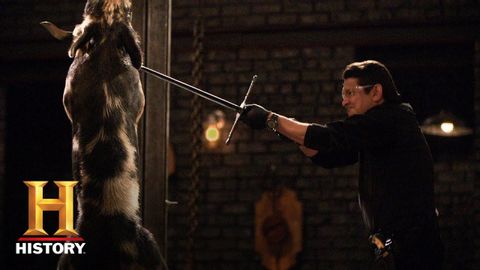
Subtitles & vocabulary
Forged in Fire: The Boar Sword MAULS THE COMPETITION in Final Round (Season 6) | History
00
林宜悉 posted on 2020/03/19Save
Video vocabulary
absolutely
US /ˈæbsəˌlutli, ˌæbsəˈlutli/
・
UK /ˈæbsəlu:tli/
- Adverb
- Completely; totally; very
- Considered independently and without relation to other things; viewed abstractly; as, quantity absolutely considered.
A2
More process
US /ˈprɑsˌɛs, ˈproˌsɛs/
・
UK /prə'ses/
- Transitive Verb
- To organize and use data in a computer
- To deal with official forms in the way required
- Noun (Countable/Uncountable)
- Dealing with official forms in the way required
- Set of changes that occur slowly and naturally
A2TOEIC
More impact
US /ˈɪmˌpækt/
・
UK /'ɪmpækt/
- Noun
- A striking effect or result to hit with force
- Act or force of one thing hitting something else
- Verb (Transitive/Intransitive)
- To hit or strike someone or something with force
- To have a strong effect on someone or something.
A2TOEIC
More treat
US /trit/
・
UK /tri:t/
- Transitive Verb
- To pay for the food or enjoyment of someone else
- To use medical methods to try to cure an illness
- Noun (Countable/Uncountable)
- Something you buy for others as a surprise present
- something that tastes good and that is not eaten often
A1TOEIC
More Use Energy
Unlock All Vocabulary
Unlock pronunciation, explanations, and filters
